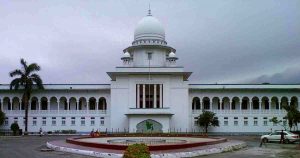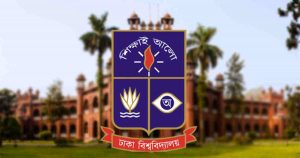Land Mass: Canada is the world’s second-largest country (9 970 610 km2), surpassed only by the Russian Federation.
Capital: Ottawa, in the province of Ontario.
Provinces and Territories: Canada has 10 provinces and 3 territories, each with its own capital city (in brackets): Alberta (Edmonton); British Columbia (Victoria); Prince Edward Island (Charlottetown); Manitoba (Winnipeg); New Brunswick (Fredericton); Nova Scotia (Halifax); Nunavut (Iqaluit); Ontario (Toronto); Quebec (Quebec City); Saskatchewan (Regina); Newfoundland (St. John’s); Northwest Territories (Yellowknife); and Yukon Territory (Whitehorse).
Geography: Diversity is the keynote of Canada’s geography, which includes fertile plains suitable for agriculture, vast mountain ranges, lakes and rivers. Wilderness forests give way to Arctic tundra in the Far North.
Climate
There are many climatic variations in this huge country, ranging from the permanently frozen icecaps north of the 70th parallel to the luxuriant vegetation of British Columbia’s west coast. Canada’s most populous regions, which lie in the country’s south along the U.S. border, enjoy four distinct seasons. Here daytime summer temperatures can rise to 35ºC and higher, while lows of -25ºC are not uncommon in winter. More moderate temperatures are the norm in spring and fall.
Parks and Historic Sites: Canada maintains 38 national parks, which cover about 2% of the country’s landmass. Banff, located on the eastern slopes of Alberta’s Rocky Mountains, is the oldest (est. 1885); TuktutNogait, in the Northwest Territories, was established in 1996. There are 836 national historic sites, designated in honour of people, places and events that figure in the country’s history. Canada also has over 1000 provincial parks and nearly 50 territorial parks.
Mountain Ranges: Canada’s terrain incorporates a number of mountain ranges: the Torngats, Appalachians and Laurentians in the east; the Rocky, Coastal and Mackenzie ranges in the west; and Mount St. Elias and the Pelly Mountains in the north. At 6050 m, Mount Logan in the Yukon is Canada’s tallest peak.
Lakes: There are some two million lakes in Canada, covering about 7.6% of the Canadian landmass. The main lakes, in order of the surface area located in Canada (many large lakes are traversed by the Canada-U.S. border), are Huron, Great Bear, Superior, Great Slave, Winnipeg, Erie and Ontario. The largest lake situated entirely in Canada is Great Bear Lake (31 326 km2) in the Northwest Territories.
Rivers: The St. Lawrence (3058 km long) is Canada’s most important river, providing a seaway for ships from the Great Lakes to the Atlantic Ocean. The longest Canadian river is the Mackenzie, which flows 4241 km through the Northwest Territories. Other large watercourses include the Yukon and the Columbia (parts of which flow through U.S. territory), the Nelson, the Churchill, and the Fraser–along with major tributaries such as the Saskatchewan, the Peace, the Ottawa, the Athabasca, and the Liard.
Time Zones: Canada has six time zones. The easternmost, in Newfoundland, is three hours and 30 minutes behind Greenwich Mean Time (GMT). The other time zones are the Atlantic, the Eastern, the Central, the Rocky Mountain and, farthest west, the Pacific, which is eight hours behind GMT.
Political System: Canada is a constitutional monarchy and a federal state with a democratic parliament. The Parliament of Canada, in Ottawa, consists of the House of Commons, whose members are elected, and the Senate, whose members are appointed. On average, members of Parliament are elected every four years.
Charter of Rights and Freedoms: Canada’s constitution contains a Charter of Rights and Freedoms, which sets out certain fundamental freedoms and rights that neither Parliament nor any provincial legislature acting alone can change. These include equality rights, mobility rights, and legal rights, together with freedoms such as speech, association, and peaceful assembly.
National Emblem: The maple leaf has been associated with Canada for some time: in 1868, it figured in coats of arms granted to Ontario and Quebec; and in both world wars, it appeared on regimental badges. Since the 1965 introduction of the Canadian flag, the maple leaf has become the country’s most important symbol.
The Canadian Flag: Several people participated in designing the Canadian flag. Jacques St. Cyr contributed the stylized maple leaf, George Bist the proportions, and Dr. Gunter Wyszechi the colouration. The final determination of all aspects of the new flag was made by a 15-member parliamentary committee, which is formally credited with the design. After lengthy debate, the new flag was adopted by Parliament. It officially became the national flag on February 15, 1965, now recognized as Canada’s Flag Day.
National Anthem: O Canada was composed in 1880, with music by CalixaLavallée and words by Judge Adolphe-BasileRouthier. In 1908, Robert Stanley Weir wrote the translation on which the present English lyric is based. On July 1, 1980, a century after being sung for the first time, O Canada was proclaimed the national anthem.
Currency: The Canadian dollar is divided into 100 cents.
Population: As of the summer of 1996, Canada’s population was over 30 million.
Main Cities: The leading Canadian cities are Toronto (4.44 million), Montreal (3.36 million), Vancouver (1.89 million), Ottawa-Hull, the National Capital Region (1.03 million).
A large majority of Canadians, 77 percent, live in cities and towns.
At the time of the 1996 national census, the average family size was 3.1, including 1.2 children.
Living Standard: Canada ranks sixth in the world in standard of living (measured according to gross domestic product per capita), behind only the United States, Switzerland, Luxembourg, Germany, and Japan. Canada’s rank among nations tends to rise even higher in assessments that consider GDP per capita along with other factors (e.g., life expectancy, education) that contribute to “quality of life.”
Basic health care, with the exception of dental services, is free at the point of delivery. And prescription drugs are in most cases dispensed without charge to people over 65 and social aid recipients. Canada also has an extensive social security network, including an old age pension, a family allowance, unemployment insurance and welfare.
Aboriginal Peoples: In 1996, about 3% of Canadians belonged to one or more of the three Aboriginal groups recognized by the Constitution Act, 1982: North American Indian, Métis, or Inuit. Of this percentage, about 69% are North American Indian, 26% Métis, and 5% Inuit.
Religion: According to the 1991 census, more than four-fifths of Canadians are Christian, with Catholics accounting for about 47% of the population and Protestants about 36%. Other religions include Judaism, Islam, Hinduism, Sikhism and Buddhism. Some 12.5%, more than any single denomination except Roman Catholic, have no religious affiliation at all.
Languages: Canada has two official languages: English, the mother tongue of about 59% of Canadians; and French, the first language of 23% of the population. A full 18% have either more than one mother tongue or a mother tongue other than English or French, such as Chinese, Italian, German, Polish, Spanish, Portuguese, Punjabi, Ukrainian, Arabic, Dutch, Tagalog, Greek, Vietnamese, Cree, Inuktitut, or other languages.
The Official Languages Act makes French and English the official languages of Canada and provides for special measures aimed at enhancing the vitality and supporting the development of English and French linguistic minority communities. Canada’s federal institutions reflect the equality of its two official languages by offering bilingual services.
Ethnic Origin: In 1996, about 19% of the population reported “Canadian” as their single ethnic origin, with 17% reporting British Isles-only ancestry and 9% French-only ancestry. About 10% reported a combination of British Isles, French, or Canadian origin, with another 16% reporting an ancestry of either British Isles, French or Canadian in combination with some other origin. Some 28% reported origins other than the British Isles, French or Canadian.
Education: The educational system varies from province to province and includes six to eight years of elementary school, four or five years of secondary school and three or four years at the university undergraduate level. The 1996 census revealed that, among Canadians aged 15 and over, about 23% had graduated from secondary school, some 9% had bachelor’s degrees, and about 6% had advanced degrees.
Sports: Canada’s most popular sports include swimming, ice hockey, cross-country and alpine skiing, baseball, tennis, basketball and golf. Ice hockey and lacrosse are Canada’s national sports.
Main Natural Resources: The principal natural resources are natural gas, oil, gold, coal, copper, iron ore, nickel, potash, uranium and zinc, along with wood and water.
Leading Industries: These include automobile manufacturing, pulp and paper, iron and steel work, machinery and equipment manufacturing, mining, extraction of fossil fuels, forestry and agriculture.
Exports: Canada’s leading exports are automobile vehicles and parts, machinery and equipment, high-technology products, oil, natural gas, metals, and forest and farm products.
(Shared by: Mahir Mahmood, student of Grade-7, Shamuel Harn Middle School, Toronto, Canada)




